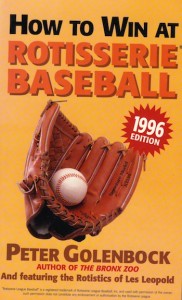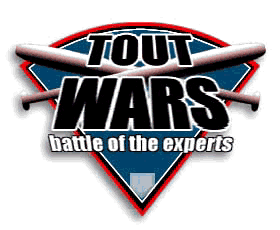Rudy Gamble is running a series on player valuation over at Razzball.com, and he has lots of interesting things to say. One of the reasons for that is because he’s inquiring. He’s doing that most interesting thing, to me anyway, of trying to figure it out in public. The piece I read today is about category valuation in roto pricing.
I’ve written a little bit about this over the years and wanted to add some material for those interested in Rudy’s ideas. I’m not going to recap what he says, because you should read it yourself (yes, that’s the same link) if you’re interested. But I think I have a thing or two to add.
First off, there is no one pricing system that works. Different pricing systems value different things. For instance, there are the values of our projections (our evaluation before the season starts) and our prices (of actual stats).
Before the season, we have to price hitters for 67-70 percent of the budget, and pitchers for 30-33 percent, because that’s how leagues spend for them before the season starts.
But after the season, when we know what the stats are, the really proper valuation when analyzing a team’s strengths and weaknesses, is to split the budget 50/50, half to hitters, half to pitchers. That will tell you why Team A beat Team B better than the 70/30 split will.
What it won’t do is give you a good reference price for next year’s draft. For that you have to go back to the 67-70/30-33 split.
I wrote about this here if you’re interested in more.
As for the value of individual categories, in the post season they are each of them equal. The total dollar value given to each should be the same. 50/50 split, 1/10th of the total value for each category in 5×5. That’s it.
But in the preseason, when we’re trying to find out what a player was worth based on the values that people draft by, Saves and Stolen Bases get a serious discount, and BA and Wins probably should, too.
But this is where we amble into an existential walk on the beach. When do you actually use post-season values?
 You use them when you’re trying to seriously figure out why this team won and this team didn’t. But has anyone actually done this? Les Leopold wrote about the 50/50 split pricing in How To Win At Rotisserie Baseball back in 1996. He and I talked about it all winter long that year, but as a practical tool it hasn’t created the two-priced revolution Les anticipated. Why is that?
You use them when you’re trying to seriously figure out why this team won and this team didn’t. But has anyone actually done this? Les Leopold wrote about the 50/50 split pricing in How To Win At Rotisserie Baseball back in 1996. He and I talked about it all winter long that year, but as a practical tool it hasn’t created the two-priced revolution Les anticipated. Why is that?
I think it is because we’re really relentlessly future focused, and prices that reflect the value of last year through next year’s lens are a better fit for future analysis.
I think it is also because we’ve been ludicrously slow (I’m at fault, I have the data) to have a database of player prices, to allow us to investigate how player performance matches with expectations. Once I get that together, everything will change. Absolutely.
Thanks, Rudy, for advancing the conversation!



You must be logged in to post a comment.